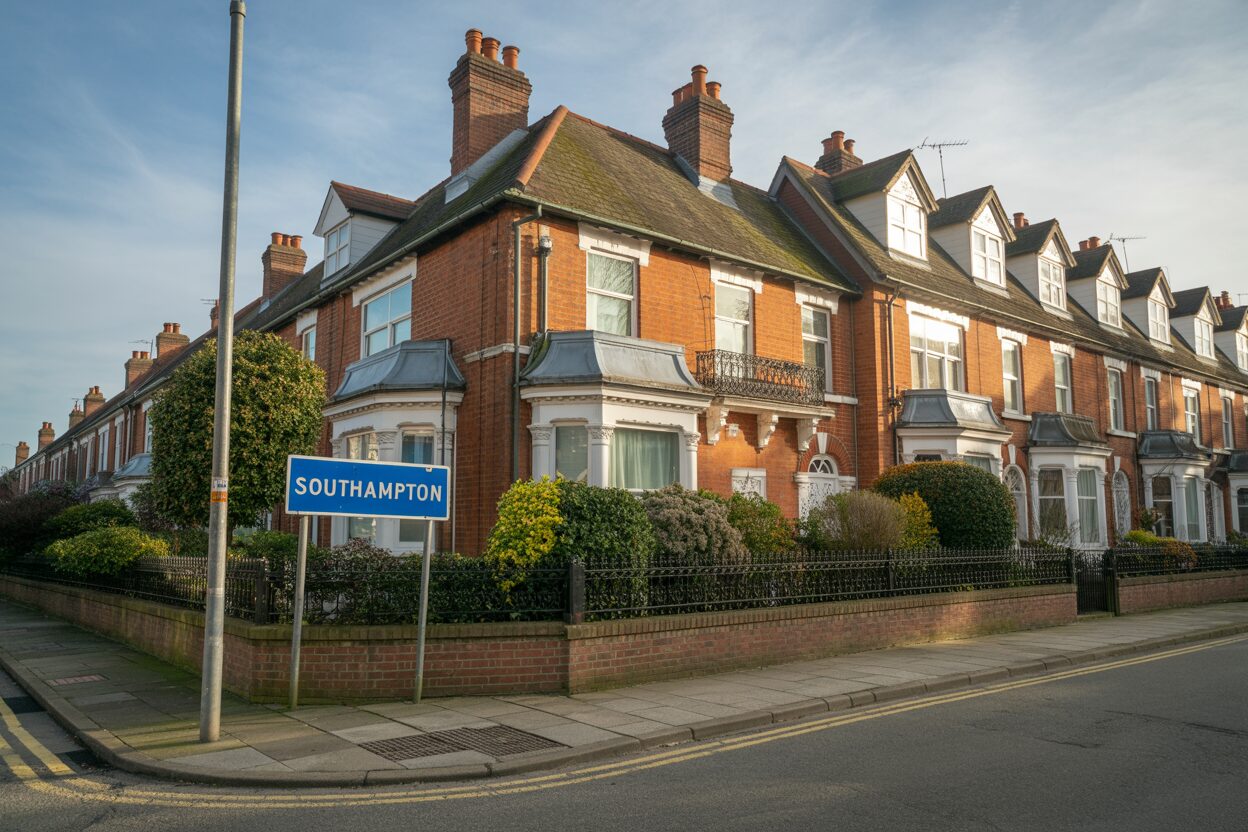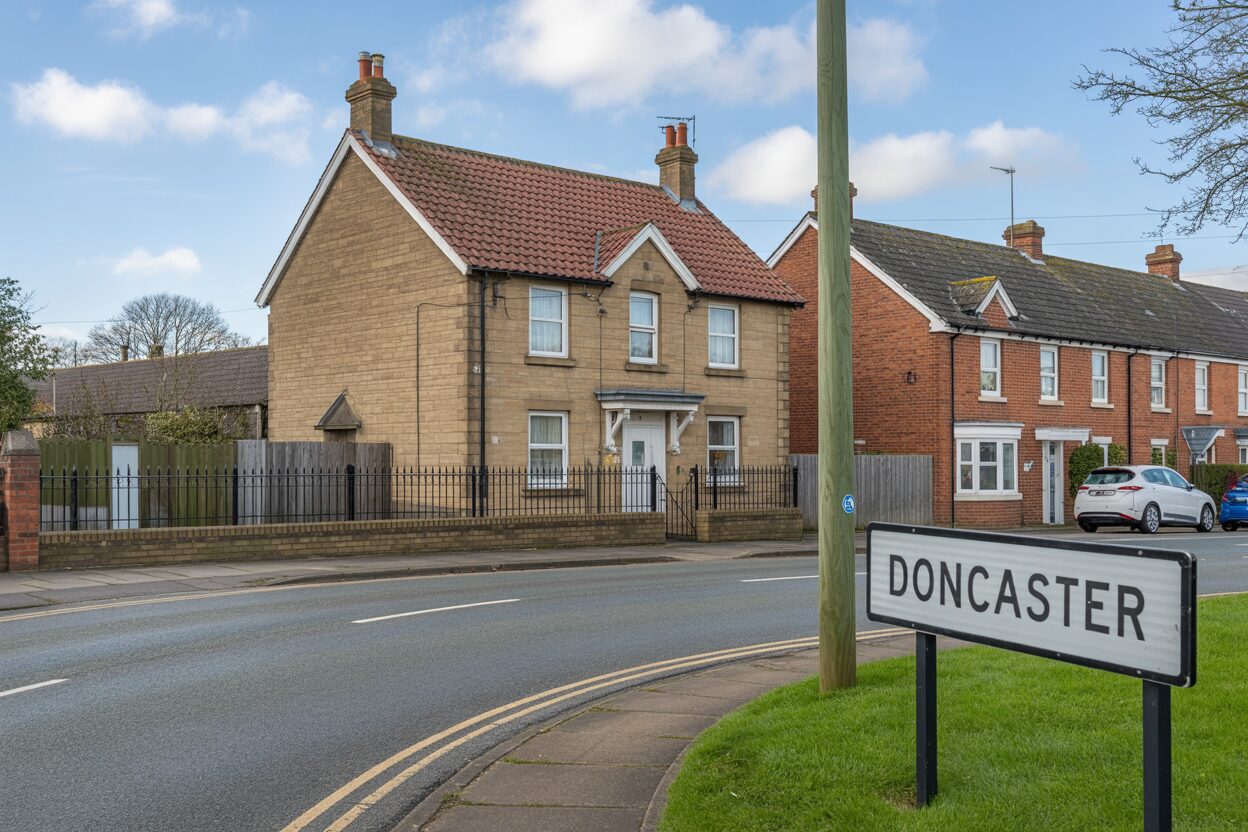
On the Southampton City Council website, the authority states there are around 6,000 to 7,000 HMOs in its jurisdiction. Of those, 2,300 to 2,500 have five or more occupiers. The city’s total housing stock is 109,226, meaning more than one in 16 properties is an HMO. That’s compared to an average of around 0.8% nationally on 2021 Census figures. This rapid growth in numbers is one key reason behind the introduction of a new Southampton HMO licensing scheme.
In this article, find out where the new licensing scheme applies in Southampton and why there’s a need for it.
HMO licensing in Southampton
By law, houses in multiple occupation (HMO) with five or more occupants from three or more households (“large HMOs”) must hold a “mandatory licence” from the council. The point of the licence is to make sure the property is safe, well managed and meets national standards.
Sometimes, local authorities decide to compel HMOs with six or fewer people (small HMOs) to hold a licence as well. The reason for this is often to raise standards in areas with high concentrations of smaller, poorly maintained shared homes.
They can do so by introducing an “additional licensing” scheme. Southampton City Council introduced a limited scheme that went live on 1st September 2025 in these nine wards:
- Banister & Polygon
- Bargate
- Bassett
- Bevois
- Freemantle
- Millbrook
- Portswood
- Shirley
- Swaythling
At the end of the five years, the council must hold another consultation and decide whether to end or extend it. In all other wards in the city, small HMO landlords don’t need an HMO licence. So, nothing has changed for them.
Southampton City Council introduced their scheme after they found these nine wards had a high concentration of HMOs. There were also major concerns about the generally poor property conditions in these areas.
The goal of the scheme is, over the next five years, to identify substandard HMOs more easily and force landlords to bring them up to a safe and decent standard.
Eighty six per cent of all known HMOs in Southampton are found in these nine designated wards, which is why the council has focused its efforts here.
Why is there a need for a new licensing scheme?
The seven reasons for introducing additional licensing are:
| Problem | Hoped-for positive effect |
| The current mandatory licensing scheme only covers properties with five or more occupants | By introducing additional licensing, it’ll be easier for the council to inspect and vet smaller HMOs in the nine wards. |
| Complaints rose after the closure of three previous additional licensing schemes in the city. Landlord behaviour deteriorates without supervision. | Much fewer complaints and a rise in compliance, which reached 85% under the previous D2 scheme. |
| The council is limited to reactive enforcement, hampering their ability to deal with minor cases | Proactive inspections and monitoring can stop minor issues becoming major ones. Right now, inspectors tend to deal with only the worst cases, meaning routine problems go unchecked |
| HMO density is rising significantly in specific wards | The new scheme will give the council control over granting licences. They can better protect individual ward characteristics and respond to local pressures |
| Too many instances of increased waste, rubbish and anti-social behaviour around some unlicensed HMOs | Councils will be able to force HMO landlords to follow tough waste disposal conditions and respond better to issues raised by residents. |
| Lack of consistency on adherence to gas, electric and fire safety across the city | Tenants will benefit from equal protection from fire, electrical and gas risks regardless of where they live |
| Concerns about the quality of HMO management | The council can run “fit and proper person” checks on all HMO landlords and managers in the nine wards, improving overall standards |
What will change for landlords?
Nothing they will change for large HMO landlords. They will still need a mandatory HMO licence. Nothing will change from small HMO landlords whose properties are not in the nine target wards. You don’t need to do anything.
For landlords with small HMOs in the target wards, you must now apply for an additional licence.
After you send in your application (and regularly throughout the five years you hold the licence), HMO wardens and inspectors will visit your property. This is to check it complies with the conditions set out in the council’s “Guidance on standards for Houses in Multiple Occupation“.
You need to make sure your HMO meets the following standards:
- Minimum room sizes: A room for a single occupant must be at least 6.51 square metres. For a double occupancy room, the minimum size is 10.22 square metres.
- Gas and electrical safety: You must provide an annual Gas Safety Record from a Gas Safe registered engineer. You also need a valid Electrical Installation Condition Report (EICR) from a qualified electrician to prove all wiring is safe.
- Fire safety: A comprehensive fire risk assessment is mandatory. At a minimum, every HMO must have mains-wired, interlinked smoke detectors in hallways and living areas, along with a mains-wired heat detector in the kitchen.
- Amenities and waste: You have to provide adequate kitchen and bathroom facilities for the number of tenants. You must also supply enough bins and have a clear plan for waste disposal to prevent issues that can lead to anti-social behaviour.
If your HMO doesn’t meet these minimum property standards, then you won’t pass inspection. This may mean your licence application is refused. If you fail inspection after receiving a licence, the council can issue an improvement notice, vary or revoke your licence, and apply civil penalties of up to £30,000.
How do landlords apply for HMO licensing in Southampton?
This is how you apply for an HMO licence under the council’s new measures:
- Check which licence you need: First, work out if your property falls under the national mandatory licensing (five or more occupants). If it doesn’t, apply under the new additional licensing scheme (three or four occupants in one of the nine designated wards).
- Meet the deadline: Submit your application within three months of the scheme’s start date. The scheme begins on 1 October 2025 meaning your effective deadline is 1 January 2026.
- Submit your application: Your application must include detailed information, like property floor plans and all current safety certificates (Gas Safety, EICR).
- Pay the fee: The application costs £953 but if you apply after the three-month deadline, the fee goes up to £1,618.
An inspector will come to your property, as discussed earlier, as part of the approval process. You (and the managing agent you nominate) will also be subject to a “fit and proper person” test. The council may refuse your licence for any unspent criminal convictions related to fraud, dishonesty, violence or drugs. They may also withhold it for past breaches of landlord and tenant law.
Licences are typically valid for five years. After that point, you must reapply to continue operating your HMO legally. If Southampton City Council do not extend the additional HMO licensing scheme past its five year deadline, you may not need to apply again.
What are the penalties for non-compliance?
The penalty for non-compliance with the new system is:
| Type of non-compliance | Potential penalty and enforcement action |
| Operating an HMO without a licence | A Civil Penalty of up to £30,000 or prosecution with an unlimited fine. |
| Breaching a licence condition | A fine of up to £30,000 for each breach. |
| Failing to license a property | Tenants can apply for a Rent Repayment Order to claim back up to 12 months of rental income paid to you. |
| Operating an unlicensed HMO | You cannot serve a Section 21 notice to evict tenants until the property is licensed. |
Do I have to apply for planning permission to convert a property to an HMO?
You need to apply for planning permission to convert a property in Southampton to an HMO.
Since 23 March 2012, the whole city has been covered by an Article 4 Direction. That means you must apply for planning permission to change a standard dwellinghouse home (C3 use) into a small HMO (C4 use) (3–6 tenants) anywhere in the city. You can however change back from a C4 to C3 without requiring planning approval. You’ve always needed permission for large HMOs (7+ people) (use call sui generis). [Related article: Use Class C4 & C3 to C4 Change of Use Explained]
The council applies a concentration test under its HMO regulations to each application.If approval would take HMO levels above 10% within 40 metres or among the 10 nearest homes in Bassett, Portswood or Swaythling, it’ll refuse permission, unless there’s a clear exceptional reason. Across the rest of the city, the threshold is 20%. One and two bed flats don’t count towards the baseline and properties with flexible C3/C4 permission still count as HMOs for future planning checks.
If you can prove a property was already C4 by 23 March 2012, you may not need to apply for planning permission.
Attitudes towards HMOs in Southampton
Politicians and planners in Southampton are generally pro-licensing for HMOs. There is a housing shortage in the city right now and the focus is resident-led.
The rationale behind introducing additional licensing was to raise standards in smaller HMOs and tackle issues with waste and anti-social behaviour. Another goal was allocating additional resources and powers to the HMO licensing team so they could actively work to raise standards across the city.
The council signalled it may explore selective licensing in future, but only after a period of evidence-gathering and further consultation.
HMO Architects: partnering landlords, investors and developers in Southampton
Many would-be and existing landlords will view the introduction of additional licensing on HMO shared homes as a negative. However, our understanding of the local market and experience with the council strongly suggests Southampton is a positive environment for HMO landlords. They did discuss other options before deciding on additional licensing which would have been much more restrictive.
HMO Architects have years of experience in working with councils, even in Article 4 Direction areas. We know how to work constructively and in partnership with planning permission teams. That’s why our success rate is 97% across 200 councils with a total project value in excess of £100m.
Here are some notable recent success stories clients have benefitted from:
- Soham Road, London (5 units): We converted a terraced house in an Article 4 area into a five-bed C4 HMO by relocating the staircase, adding a modest ground-floor extension and re-planning the layout. The property increased in value from £450,000 to £750,000 and the rent soared from £1,500pcm to £4,500.
- Fortescue Road, London (6 units): We secured approval for an unusual ground-floor extension and added a dormer under permitted development. After that, we helped the owner through the planning process to secure a change of use to a six-bed HMO, modelling the application on the street pattern. Property value increased from £900,000 to £1.6m and rental from £1,400pcm to £7,200.
- Gunhild Close, Cambridge (6 units): We re-planned a family home into a six-bed HMO with all en-suites and tea-points, extended the loft with a dormer for head-height and upgraded thermal performance for a better EPC. The planning history was challenging but we were successful in winning the HMO use class our client wanted. The property more than tripled in value from £85,000 to £260,000 with a rental uplift from £350pcm to £2,500.
Work with HMO Architects on building your HMO portfolio in Southampton. We offer a start-to-end service, including:
- Investment strategy calls: Our Investment Director, Ryan Windsor, has helped over 2,200 clients during his career. He began building his own extensive property portfolio when he was 17. Book a call with Ryan and ask him about his BRRR method and how to centre your investment strategy around its proven principles.
- Feasibility study: Giovanni Patania, our Architect Director, provides valuable advice on pre-buy and design feasibility issues to help you decide whether an HMO project meets your investment goals and risk profile.
- Full range of services: Everything from one team including architecture design, planning permission, building regs and interior design.
- Wider network: Access experts like property development finance brokers who can arrange development finance and HMO mortgages for your project. Plug into a network of accountants, solicitors, builders, specialists and more.
Check out our detailed HMO legal FAQ, HMO renewal FAQ and find out more about the true cost of unlicensed HMOs on our website. Discover whether HMOs, buy to lets or stocks and shares deliver the best return.
View our range of development finance case studies to see how we’ve helped clients turn their ideas into sound investments. Read customer stories on HMO, flat, holiday let and housing projects.
Call us on 01223 776 997 or email us directly.
Giovanni is a highly accomplished architect hailing from Siena, Italy. With an impressive career spanning multiple countries, he has gained extensive experience as a Lead Architect at Foster + Partners, where he worked on a number of iconic Apple stores, including the prestigious Champs-Élysées flagship Apple store in Paris. As the co-founder and principal architect of WindsorPatania Architects, Giovanni has leveraged his extensive experience to spearhead a range of innovative projects.




